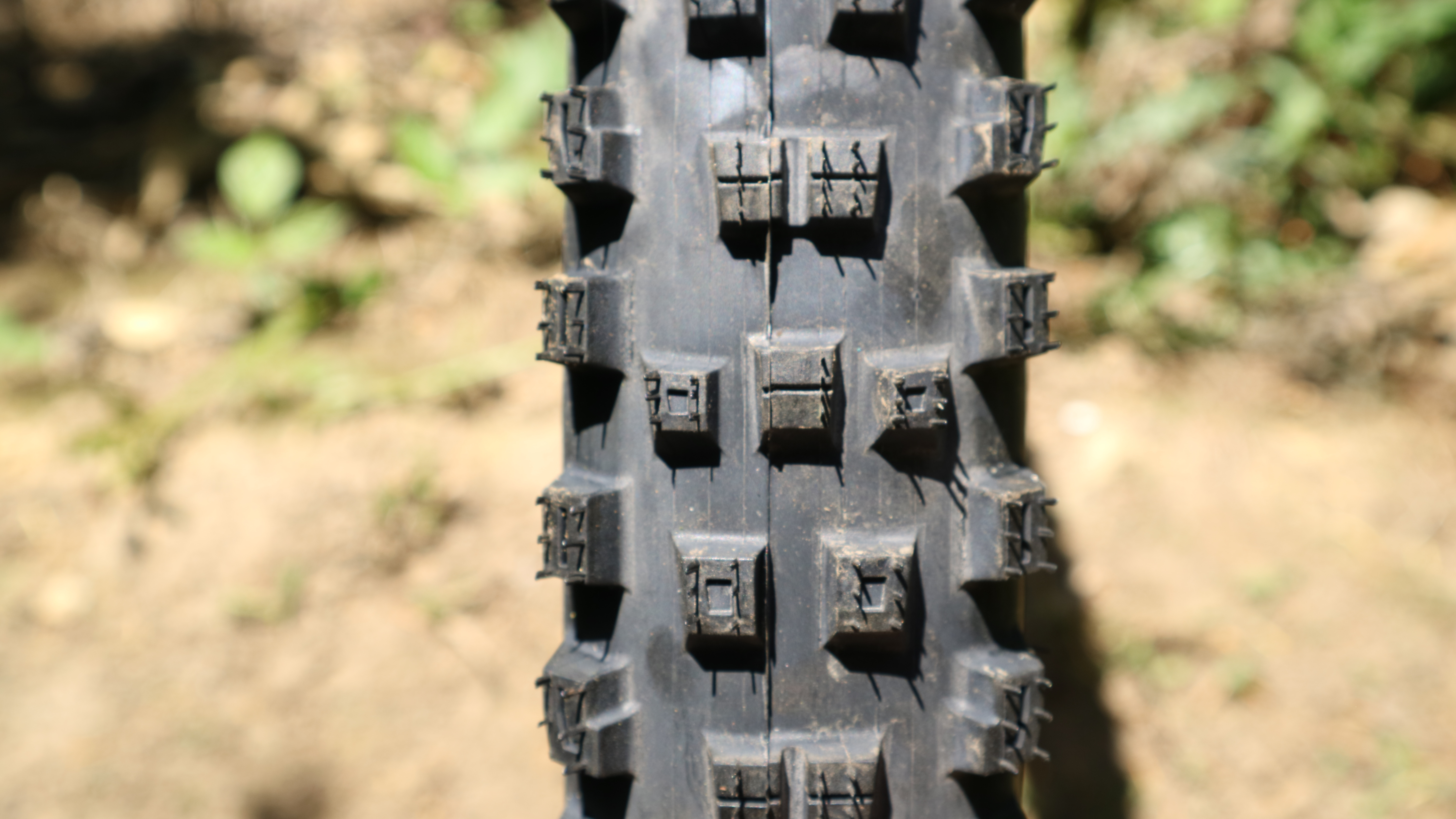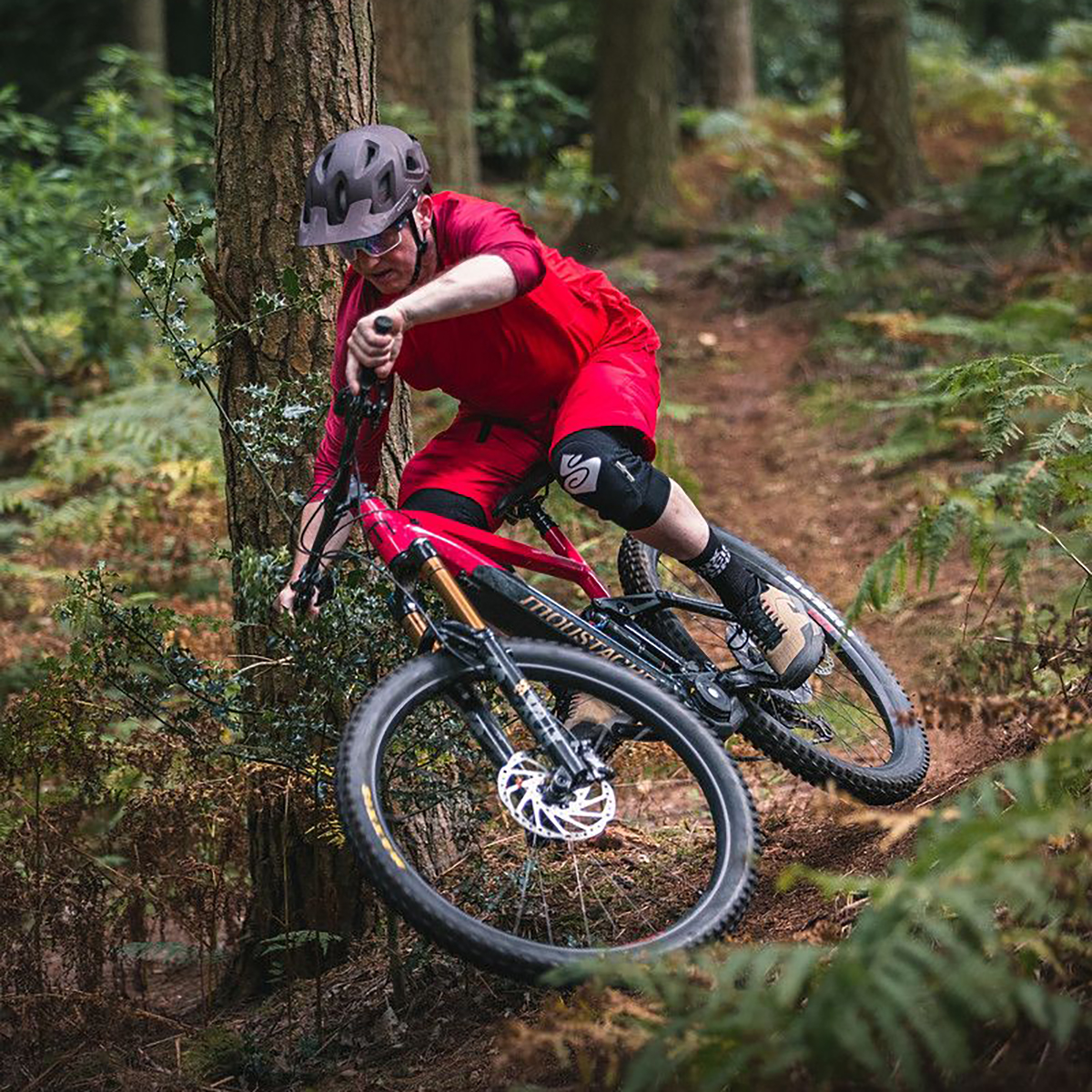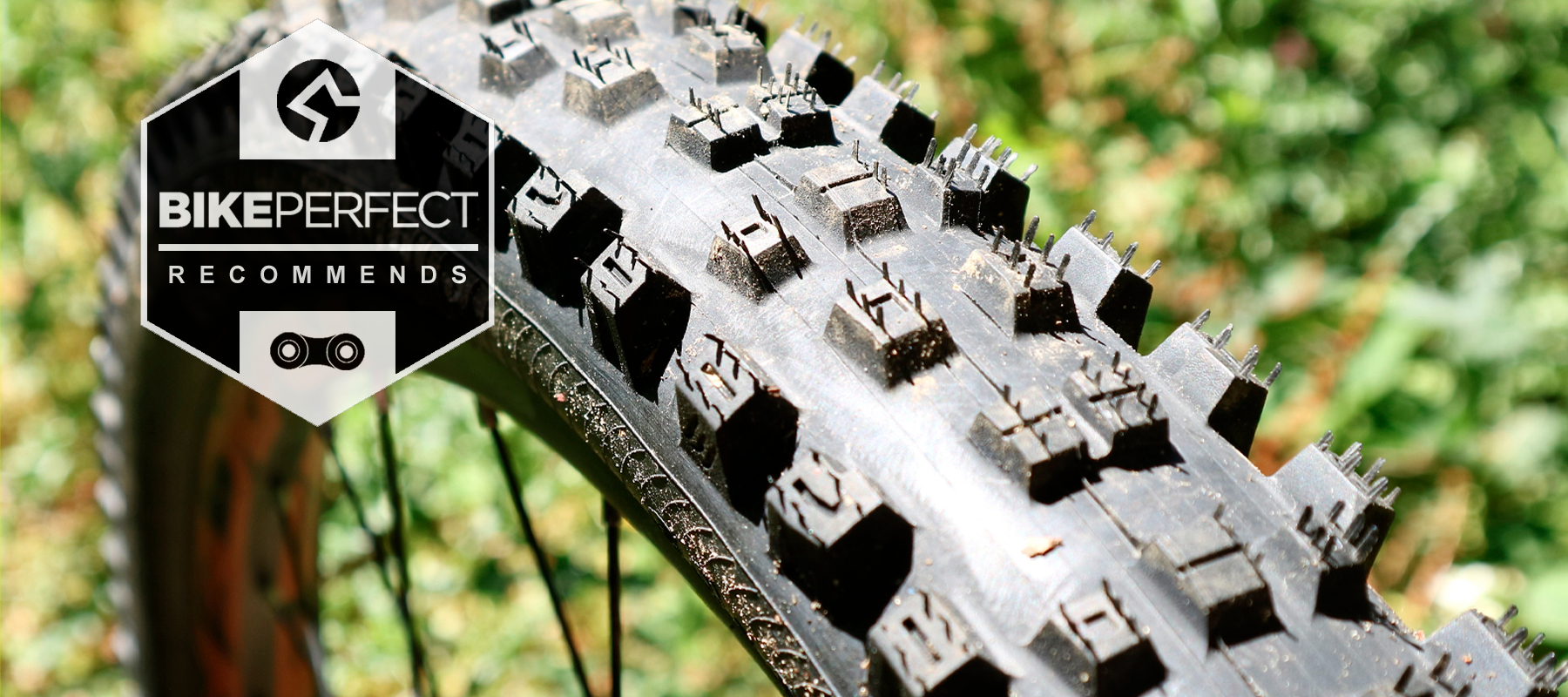Bike Perfect Verdict
Lots of casing options but only one tread pattern. Then again, if it ain’t broke why not use it for trail, enduro and gravity?
Pros
- +
Lightweight but good pinch flat protection and casing stability
- +
Excellent value for money
- +
Easy to fit and forget tubeless
- +
Quick rolling
- +
Impressive mud shedding
Cons
- -
Not as tacky as claimed
- -
Average braking traction
- -
Can wallow at lower pressures
Why trust BikePerfect
For information on Bike Perfect's testing procedures and how our scoring system works, see our how we test page.
The HellKat Pro ATC is Kenda’s top tier trail tire but there are two bigger siblings for gravity and enduro use. All three tires get the same a moto-x style tread, which was developed for the DH world Cup stage by the Kenda sponsored UR Team race team, but the protection levels have reduced and the weight cut for trail riding. This ATC version features a thinner, more resilient and lighter 120tpi casing and a dual-layer rubber compound. It comes fully tubeless ready and is available in 27.5 and 29er sizes and two widths.
Does this make for one of the best MTB trail tires around? Well, keep reading to find out.

Design
The three different casing structures Kenda offers are ATC, AEC and AGC. The middle letter represents the application – hence trail, enduro and gravity respectively. From a purely structural point of view, the gravity casing has an Aramid strip under the tread with an apex chafer to resist pinch flats. The light enduro tire eliminates this chafer and the trail tire gets some thinner nylon plies, a more resilient 120tpi casing and all in weigh of 902g, making it one of the lightest trail tires in the category.
If the tread was an eight-a-side football [aka soccer] formation, it’d be 3-2-2 with a tightly spaced row of wingers. All the knobs are either siped (they have little slits in the surface) or have shallow depressions, which help them deform and spread out, enhancing traction. To add further braking stability, two of the center lugs are co-joined and they’re also slightly lower profile than the edge lugs, so don’t flex as hard.
The tread has some pretty open channels, so clearance in mud is impressive but there are a couple of sections where the casing is a little unprotected, so you may need to ride light in the rock gardens. I’ve not had any issues with punctures (thorn or pinch flat) but I have been running this tire tubeless. Configuring the tire was straightforward – the bead seated first time and the tire didn’t require any additional air during the first outing.

Performance
Kenda employs a dual-layer rubber compound in the HellKat Pro ATC. Unlike the multi-layered compound used in the Maxxis Minion DHF 3c and Michelin Force Am2 tires, the HellKat Pro just has hard center knobs and a soft edge. The center knobs wear better, accelerate quicker and offer better braking traction, while the soft edges obviously stop you coming unstuck when getting sideways in a corner. The soft rubber isn’t quite as soft as claimed though – I measured the hardness at around 55a. While this is only medium/soft, it is low-rebound, so on hardpacked trails it gives a nicely damped feel. As a front tire the HellKat Pro doesn’t have any bad habits; it’s stable, confidence inspiring and predictable.
On the rear it also belts along at a good lick, so if you want to get a couple of safety cranks in before a jump or to get the extra percent on the crest of a climb, this tire isn’t going to hold you back. The only really fly in the ointment is the rear end would slip out occasionally on wet roots and didn’t quite have the same tenacity as Maxxis DHR II or WTB Judge when winching up a slippery climb. A good call if you ride hard or you’re 'are friends electric’ is to fit the AEC enduro version. You’re only looking at 100g increase, but you can easily run lower pressures with the thicker casing to enhance the grip.
There’s an obvious reason to buy the HellKat Pro ATC as it’s a lot cheaper than either the Maxxis and WTB tires but it matches them when it comes to performance. It doesn’t quite have the massive edge knobs of a Minion DHR II but you can still stuff it into a turn and come out all smiles. It also covers the ground quickly and efficiently and if the conditions are not too extreme you could easily run this tire all year round, saving you money and setup hassle.

Verdict
In ATC guise, the Kenda HellKat Pro is one of the lighter trail tires on the market, so may not suit harder riding or e-bike fitment. It has good grip and braking traction, rolls surprisingly quickly and the moto-x style tread works in most conditions. A summer tire you could easily run over the winter.
Tech Specs: Kenda HellKat Pro ATC
- Price: $84.95 / £50 / €59.00
- Wheel size (inches): 27.5 x 2.4, 2.6, 29 x 2.4, 2.6in
- Compound: Dual Compound
- Carcass: Dual Layer ATC, AEC, AGC
- Dimensions: 61mm (2.39in) on 30mm rim at 23psi
- Weight: 942g (ATC 29 x 2.4 tested)

Paul has been testing mountain bikes and products for the best part of 30 years, he’s passed comment on thousands of components and bikes, from the very first 29ers and dropper posts to latest e-MTBs and electronic drivetrains. He first put pen to paper for Mountain Bike International magazine but then contributed to What Mountain Bike, Cycling Today and Cycling Weekly magazines before a 20 year stint at MBR magazine. An ex-elite level XC racer, he’s broken more bones than records but is now sustained on a diet of trail building, skills coaching and e-bike trail shredding.

